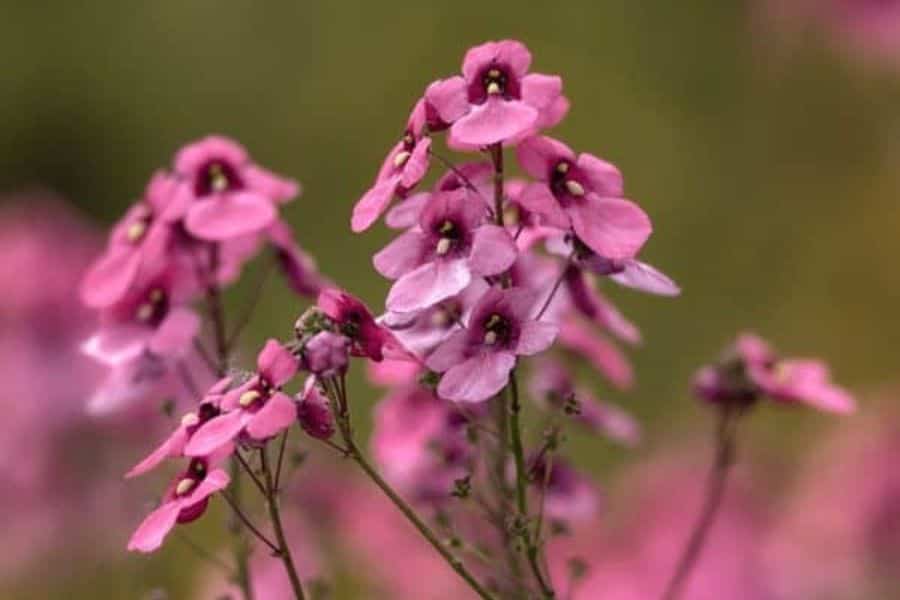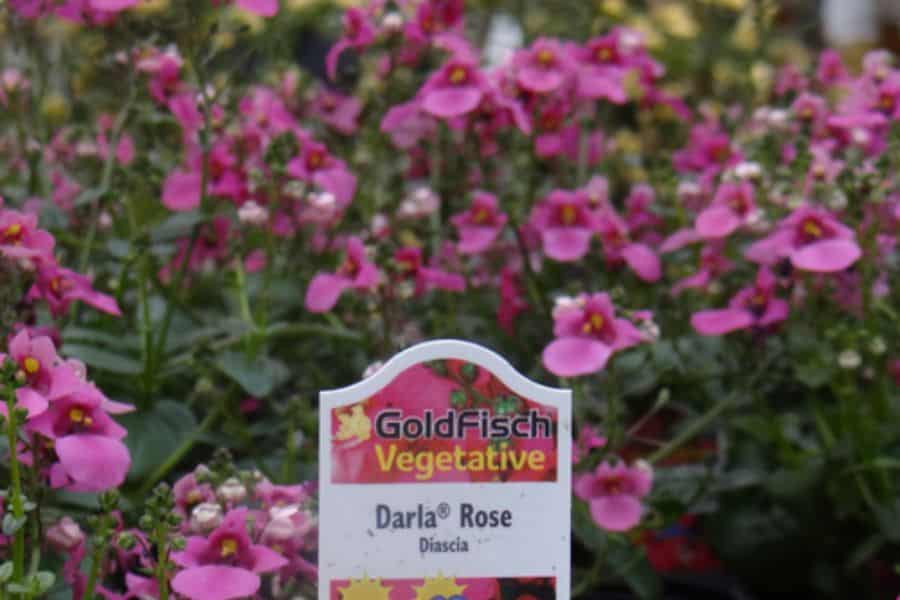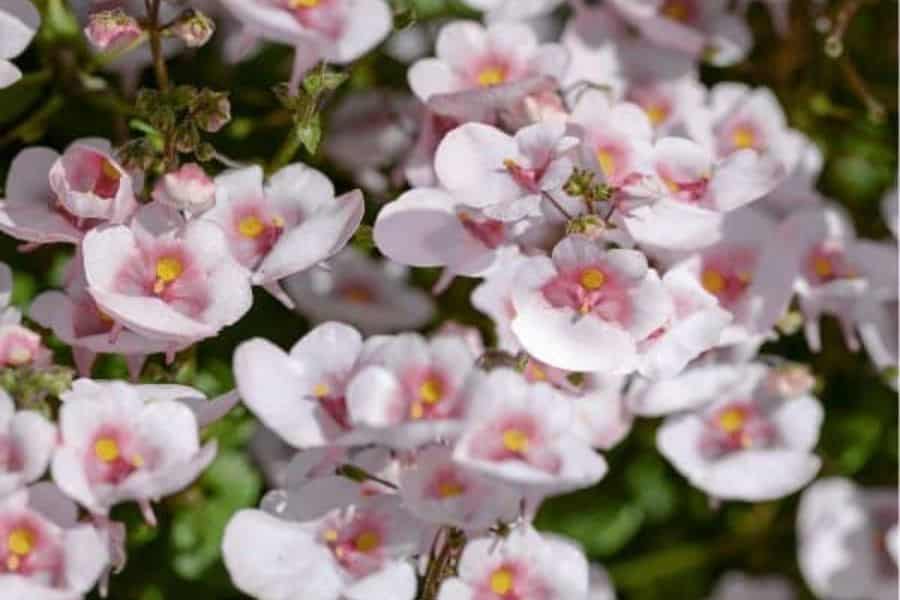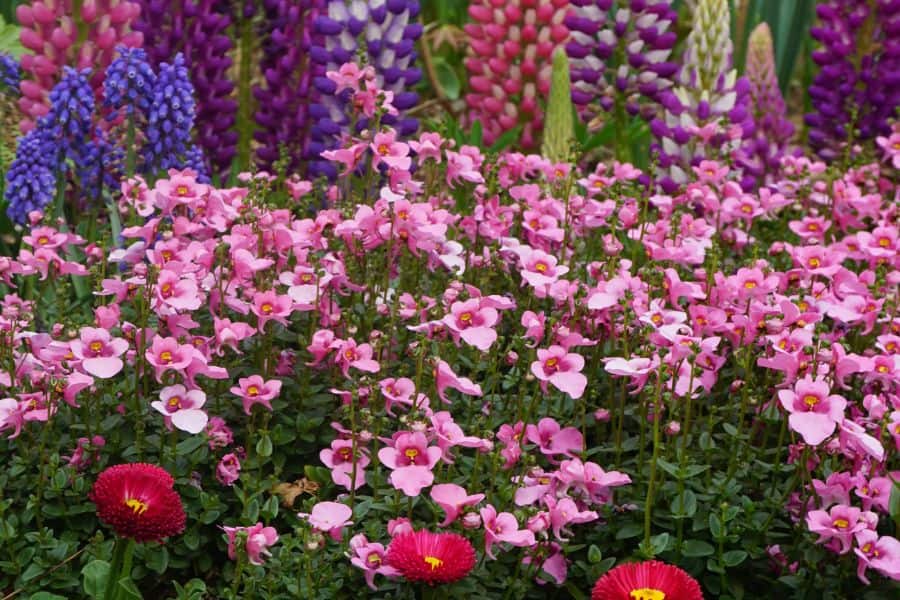Diascia, commonly known as Twinspur, is a genus of flowering plants in the family Scrophulariaceae. Diascia plants are typically small and bushy, growing to a height of 10 to 30 centimeters. They have a sprawling growth habit and can spread up to 60 centimeters wide. Diascia plants are esteemed for their profusion of small, tubular flowers that often bear a resemblance to miniature snapdragons.

Our Selection of Diascia
At Martin Garden Center, we grow Coral Canyon and the Darla Series of Diascia in 4″ containers. We also bring in Diascia from our regional vendors. Most of the Diascia we offer is the clumping varieties (more filler, less spiller). However, we usually have an expanse of all colors throughout the spring on our tables. We are growing the following varieties in 2025:
- Coral Canyon
- Darla Deep Salmon
- Darla Light Pink
- Darla Red
- Darla Rose

Growing And Caring For Diascia
Diascia is easy-to-grow and thrives in various conditions. However, following these instructions will ensure that your plant thrives:
- Preferred Growing Conditions: Diascia thrives in well-draining soil with a slightly acidic to neutral pH. Choose a location that receives full to partial sunlight for optimal growth and flowering. While Diascia can tolerate some shade, it tends to bloom more prolifically in sunnier spots.
- Planting: Plant Diascia in the spring after the last frost has passed. Space the plants about 6 to 12 inches apart, depending on the variety. Dig a hole slightly larger than the root ball, place the plant in the hole, and backfill with soil. Water thoroughly after planting to help the roots establish.
- Watering: Diascia prefers consistently moist soil, so water regularly to moisten the soil. However, avoiding waterlogged conditions is crucial, as excessive moisture can lead to root rot. Mulching around the plants helps retain soil moisture and suppress weeds.
- Fertilizing: Feed this plant with a balanced, water-soluble fertilizer every 4 to 6 weeks during the growing season. Follow the recommended application rates on the fertilizer package. Fertilizing promotes healthy growth and continuous flowering.
- Pruning and Deadheading: To encourage bushier growth and prolong blooming, pinch back the tips of the stems when the plants are young. Deadheading, or removing spent flowers, promotes continuous flowering and maintains the plant’s neat appearance. Regularly inspect the plants for faded blooms and trim them to encourage new blossoms.
- Support for Tall Varieties: Some taller varieties of Diascia may benefit from support to prevent them from flopping over. Consider using stakes or a discreet support structure to keep the plants upright, especially if grown in exposed or windy locations.
- Pest and Disease Control: Diascia is generally resistant to pests, but occasional issues like aphids or spider mites may arise. Regularly inspect the foliage for signs of pests; treat it with insecticidal soap if detected. Proper spacing and good air circulation can also help prevent diseases like powdery mildew.
Flowers
Diascia flowers are revered for their delicate and abundant blooms. These charming blossoms resemble miniature snapdragons, emerge on slender stems and form clusters of tubular flowers. One of the most captivating features of Diascia flowers is their vibrant color palette, ranging from soft pastels to intense shades of pink, coral, and orange, adding a touch of elegance and vivacity to any garden or landscape. Their prolific blooming habit ensures a continuous display of color throughout the growing season.

Uses in the Garden
Diascia is a popular choice in containers, hanging baskets, and as border plants in garden beds. It is also used as cut flowers due to their long-lasting blooms. In addition to their ornamental value, some species of Diascia have medicinal properties and are used in traditional medicine. Overall, Diascia has a wide range of uses and is a versatile plant that can add beauty and value to any garden or floral arrangement.

Frequently Asked Questions
Is Diascia Poisonous to Cats and Dogs?
Diascia is considered non-toxic to cats and dogs. The plant is not listed among the toxic plants.
Is Diascia Perennial Or Annual?
Diascia can be either a perennial or an annual, primarily depending on the climate in which it is grown. In the Upstate Of South Carolina, we enjoy Diascia as an Annual.
